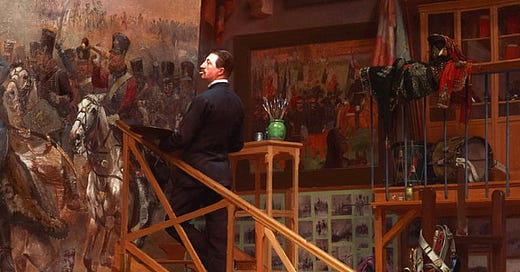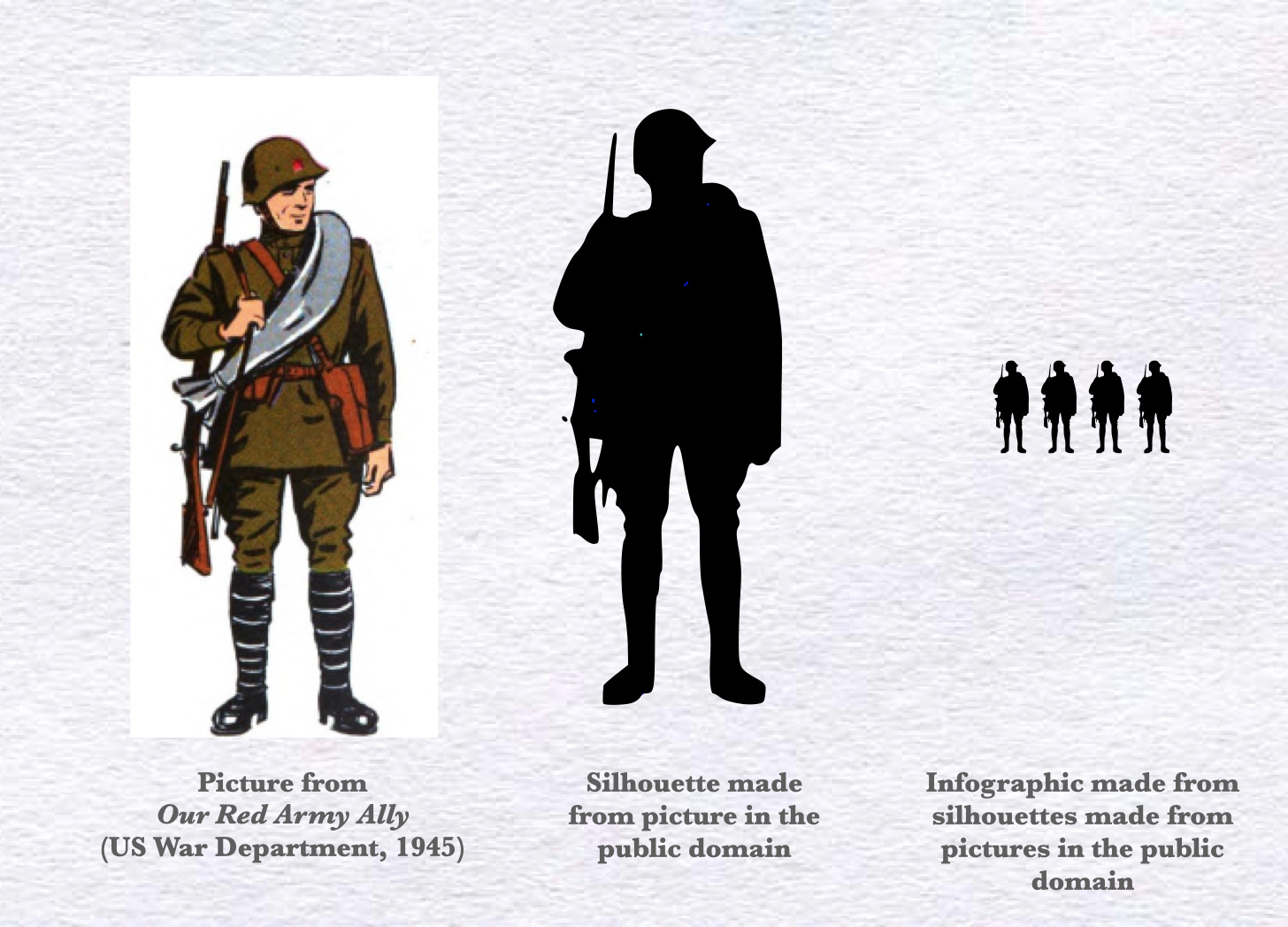Like the Gaul described by Julius Caesar, the collection of images used to illustrate articles published on The Tactical Notebook is divided into three parts; one of which consists of photos and paintings that belong to the public domain; another of pictures made available by means of a Creative Commons license; a third of maps, diagrams, and infographics produced expressly for The Tactical Notebook or its sister site, the Warfare Mastery Institute.
Illustrations created, in the course of their official duties, by employees of the federal government of the United States enter the public domain at the moment of their creation. Thus, if you see a photo, drawing, or painting that depicts events from the last ninety years or so, there is a good chance that it was taken from a manual, pamphlet, or collection created by someone in the pay of Uncle Sam.
Illustrations created by persons other than the government of the United States passed into the public domain on the seventy-fifth anniversary of their publication. Thus, if you see a picture that was originally published in a book, magazine, or pamphlet that rolled off the press before 1929, you may presume that it belongs to public domain by virtue of its antiquity.
In cases which strike me as unclear, I will use a keyboard-generated version of the “public domain mark” to indicate that an item belongs to the public domain. This symbol, which is inspired by the graphic promulgated by the folks at Creative Commons, consists of the letter “C” that has been flanked by paragraph wings and struck through with a line: (C).
Items marked with the letters “CC” and the name of the creator belong to the creative commons. In particular, they are made available by means of a “creative commons - share alike” license that allows all and sundry to reuse them, subject only to the proviso that they also include the aforementioned markings.
Illustrations drawn expressly for The Tactical Notebook, The Warfare Mastery Institute, Extra Muros, or A Wealth of Nations belong to their creators. This is true whether or not the pictures contain elements taken from items in the public domain. (For example, many of the silhouettes used in our infographics began as illustrations in works published by one of the armed services of the United States after 1929.)
To Share, Subscribe, or Support:








